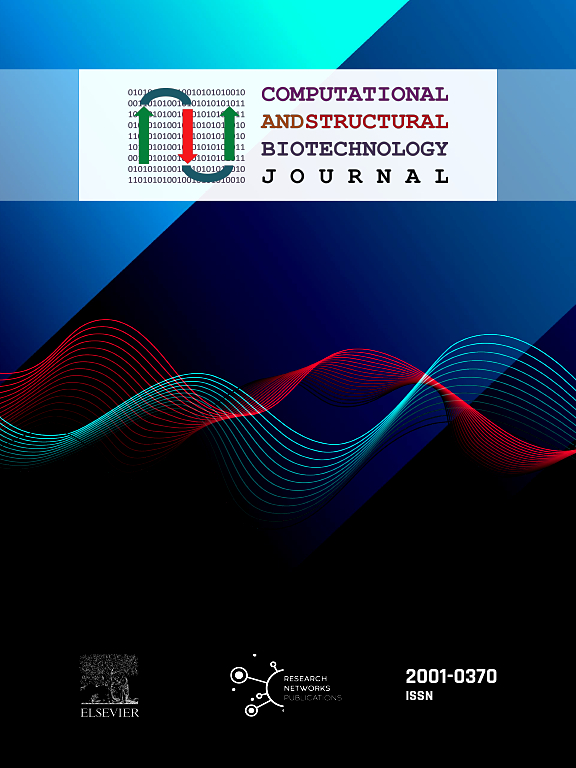安全可持续的新一代化学品和材料设计:SSbD4CheM项目在纺织、化妆品和汽车领域的创新
IF 4.4
2区 生物学
Q2 BIOCHEMISTRY & MOLECULAR BIOLOGY
Computational and structural biotechnology journal
Pub Date : 2025-01-01
DOI:10.1016/j.csbj.2025.03.022
引用次数: 0
摘要
下一代化学品和材料设计的安全和可持续(SSbD4CheM)项目的战略目标是制定各种物质和材料的筛选和测试策略,以确保符合可持续产品倡议的更安全和更可持续的产品。SSbD4CHeM专注于使用新方法的化学品安全性,包括没有动物模型和硅工具的体外研究。此外,它还整合了环境可持续性,以实施安全与可持续设计(SSbD)框架,包括风险评估和事前生命周期评估。将开发、验证和应用于三个案例研究的化学、材料和产品生命周期安全性和可持续性评估的新方法和模型,包括用于纺织品的生物基自清洁、防水和抗菌处理、用于化妆品添加剂的纳米纤维素和用于汽车工业的微纤维素复合材料。通过采用多学科战略,SSbD4CHeM解决了材料创新方面的关键挑战,确保遵守法规,同时减少对环境和人类健康的危害。该项目将加速下一代可持续材料的开发,促进行业创新,监管进步,提高消费者安全。最终,SSbD4CheM旨在为符合安全和可持续性目标的化学品和材料的开发建立新的基准。本文章由计算机程序翻译,如有差异,请以英文原文为准。
Safe and sustainable by design of next generation chemicals and materials: SSbD4CheM project innovations in the textiles, cosmetic and automotive sectors
The strategic objective of the Safe and sustainable by design of next generation chemicals and materials (SSbD4CheM) project is to develop screening and testing strategies for a variety of substances and materials to ensure safer and more sustainable products in line with the Sustainable Products Initiative. SSbD4CHeM is focusing on chemical safety using new approach methods, including in vitro studies without animal models and in silico tools. Additionally, it integrates environmental sustainability for the implementation of the Safe and Sustainable by Design (SSbD) framework including risk assessment and ex-ante life cycle assessment. New methods and models for safety and sustainability assessment along chemical, material and product life cycles will be developed, validated, and applied to three case studies, including biobased self-cleaning, water repellent, and antimicrobial treatments for textiles, nanocellulose as an additive in cosmetics, and microcellulose composites for the automotive industry. By employing a multidisciplinary strategy, SSbD4CHeM addresses key challenges in material innovation, ensuring regulatory compliance while reducing hazards to environmental and human health. The project will accelerate the development of next-generation sustainable materials, promoting industry innovation, regulatory progress, and improved consumer safety. Ultimately, SSbD4CheM aims to establish a new benchmark for the development of chemicals and materials that conform to safety and sustainability goals.
求助全文
通过发布文献求助,成功后即可免费获取论文全文。
去求助
来源期刊

Computational and structural biotechnology journal
Biochemistry, Genetics and Molecular Biology-Biophysics
CiteScore
9.30
自引率
3.30%
发文量
540
审稿时长
6 weeks
期刊介绍:
Computational and Structural Biotechnology Journal (CSBJ) is an online gold open access journal publishing research articles and reviews after full peer review. All articles are published, without barriers to access, immediately upon acceptance. The journal places a strong emphasis on functional and mechanistic understanding of how molecular components in a biological process work together through the application of computational methods. Structural data may provide such insights, but they are not a pre-requisite for publication in the journal. Specific areas of interest include, but are not limited to:
Structure and function of proteins, nucleic acids and other macromolecules
Structure and function of multi-component complexes
Protein folding, processing and degradation
Enzymology
Computational and structural studies of plant systems
Microbial Informatics
Genomics
Proteomics
Metabolomics
Algorithms and Hypothesis in Bioinformatics
Mathematical and Theoretical Biology
Computational Chemistry and Drug Discovery
Microscopy and Molecular Imaging
Nanotechnology
Systems and Synthetic Biology
 求助内容:
求助内容: 应助结果提醒方式:
应助结果提醒方式:


